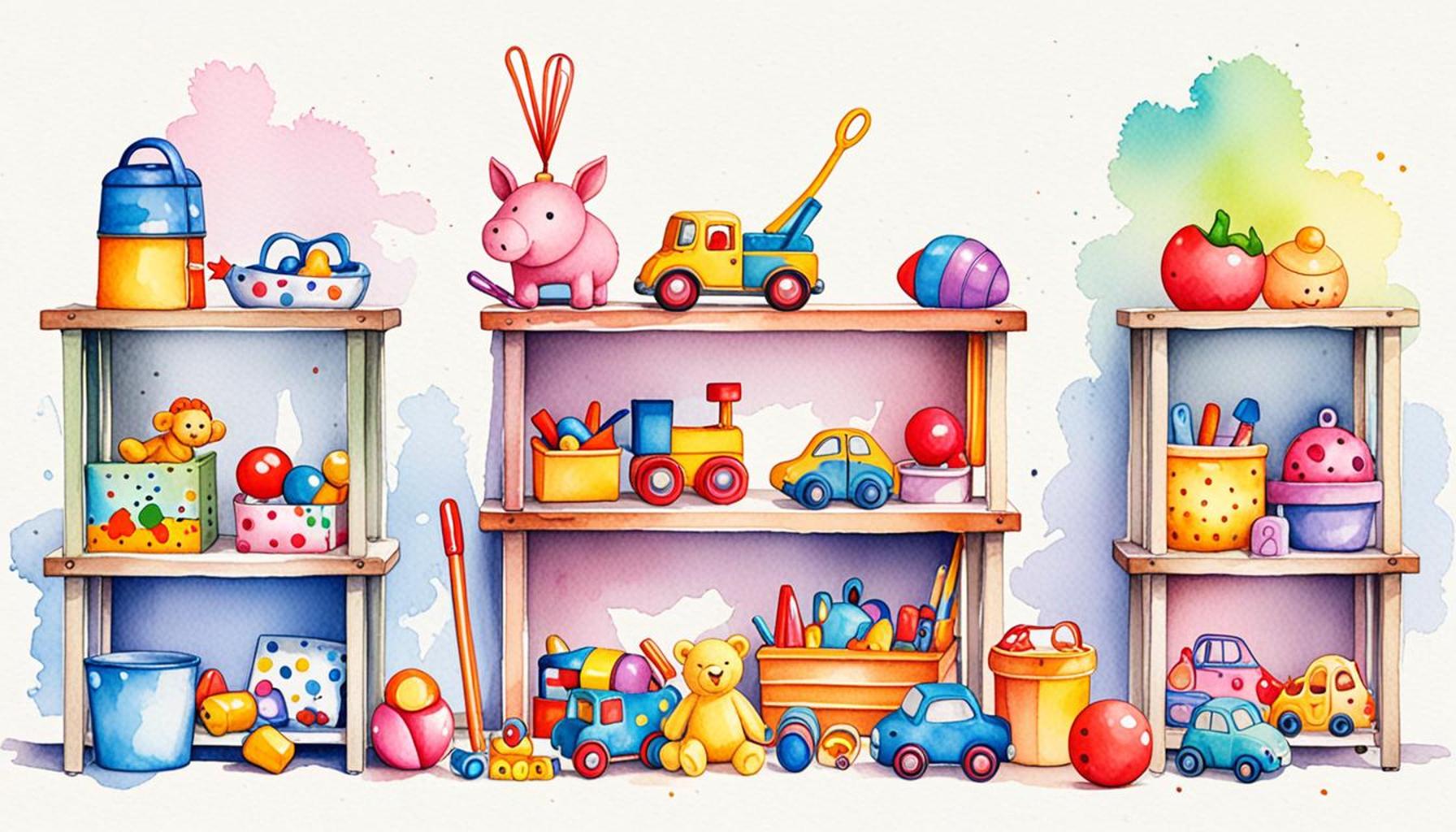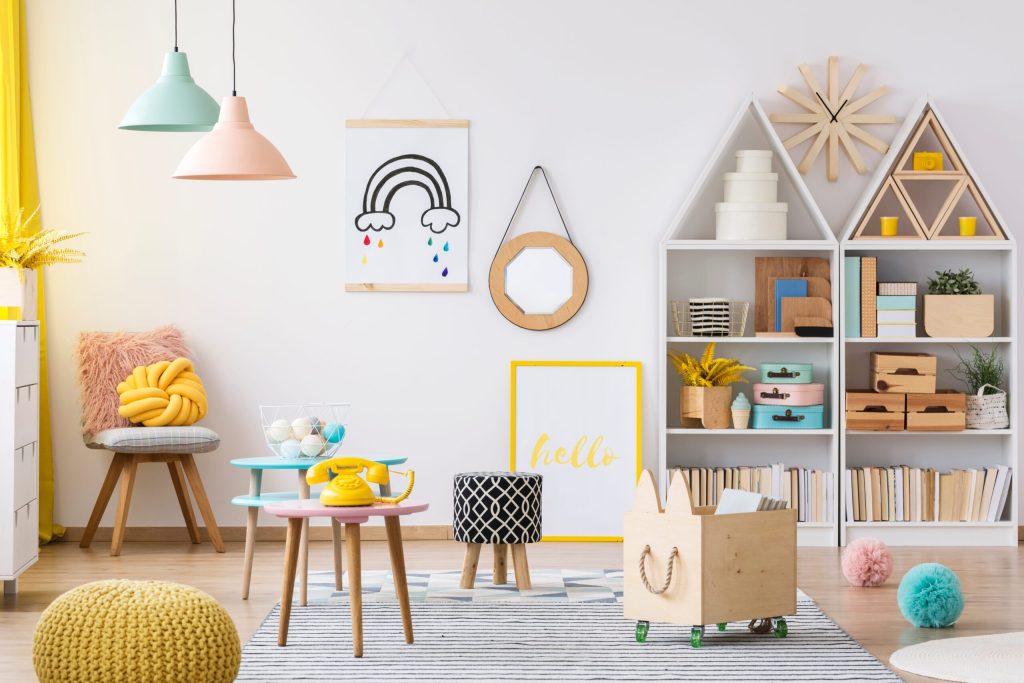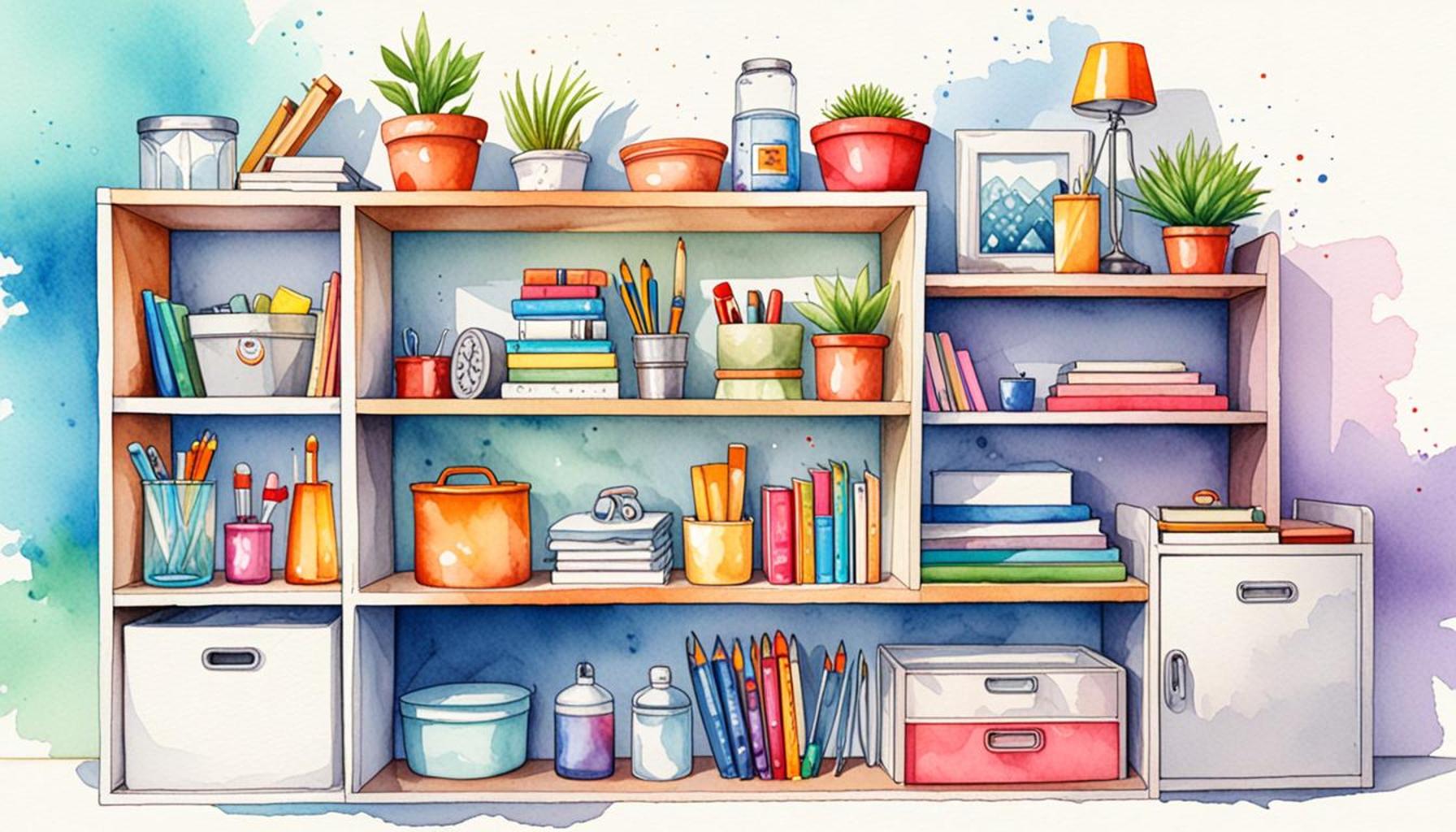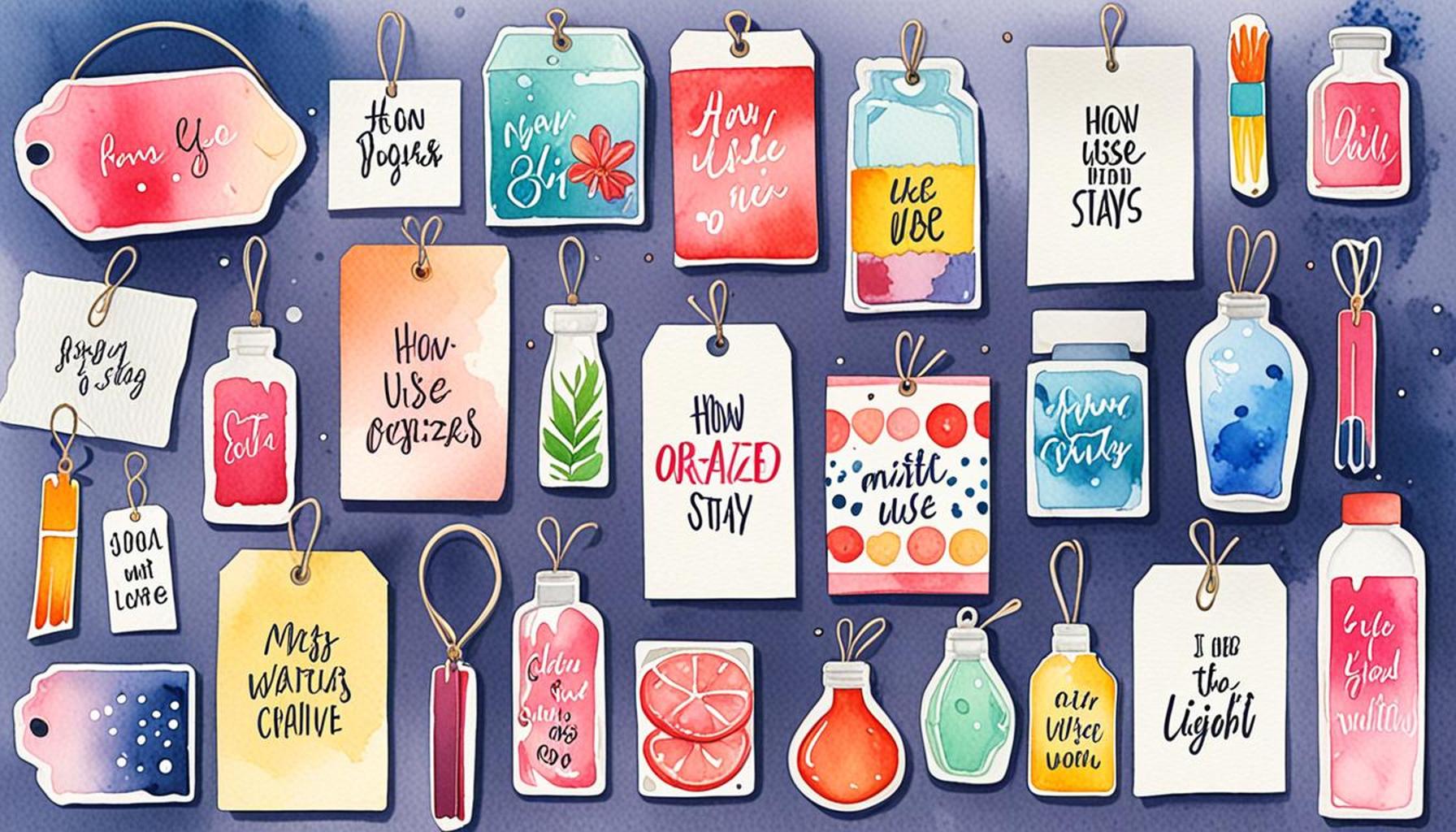Stress-Free Solutions for Organizing Kids Toys Efficiently and Neatly

Transforming Chaos into Calm
In every household with children, toy clutter can quickly spiral out of control. It’s not just about the mess, but rather the challenge it presents to maintaining a serene environment. Here are some insights into stress-free solutions for organizing kids’ toys efficiently and neatly.
Understanding the Problem
The accumulation of toys can feel overwhelming for many parents. The simple act of trying to tidy up can often lead to frustration. Here are a few factors contributing to the chaos:
- Kids receive new toys regularly from holidays and birthdays, often leading to a surplus that exceeds available storage space.
- They typically have a mix of small and large items, from tiny action figures to massive playsets, making organization particularly challenging.
- Toys are frequently scattered across various rooms, from living rooms to bedrooms, making it hard to track what belongs where.
Why Organization Matters
Organizing kids’ toys isn’t merely about aesthetics; it plays a crucial role in family dynamics and child development. Here are some reasons why an organized toy space is essential:
- First and foremost, it reduces stress for parents who are often hunting for the right play item amidst a sea of clutter.
- Additionally, an organized space encourages kids to engage in play with purpose, fostering creativity and responsibility. When children know where their toys are, they are likely to utilize them more thoughtfully.
- Importantly, organization creates a safer play environment by minimizing trip hazards and ensuring toys are not left in unexpected places.
By implementing effective strategies, families can reclaim their spaces while imparting valuable lessons on organization to their children. Consider introducing clear storage bins with labels. This visually appealing approach allows kids to easily identify where their toys belong. For example, using colorful bins for action figures, puzzles, and arts and crafts supplies can make cleanup a game, not a chore.
Additionally, engage your children in the organization process. Transform it into a bonding activity—encouraging them to sort and categorize their toys can be both fun and educational. Setting a regular schedule for decluttering, such as at the beginning of each season, can also help manage toy volume over time.

Moreover, consider introducing the concept of toy rotation. This can keep engagement high while minimizing clutter by only keeping some toys available at a time and storing the rest away. Thus, families can enjoy a neat and stimulating environment while teaching children the values of responsibility and care for their belongings.
By embracing these organization tactics, families not only restore order to their homes but also cultivate a learning atmosphere that nurtures creativity, responsibility, and mindfulness in their children.
SEE ALSO: Click here to read another article
Creative Organization Strategies
Finding innovative and effective solutions to organize kids’ toys can alleviate the burden of clutter while creating a more harmonious living space. Parents can adopt a variety of stress-free strategies that not only help in decluttering but also make the process engaging for children. Here are several methods that have proven successful for families across the United States:
1. Zone Your Space
One of the best ways to maintain an organized environment is to designate specific areas in the house for particular types of toys. Create distinct zones in playrooms or living spaces dedicated to different activities:
- Creative Zone: Use a corner for arts and crafts supplies, equipped with containers for markers, papers, and coloring books.
- Active Play Zone: Set aside an area for larger toys like play structures or sports equipment.
- Quiet Time Zone: Establish a reading nook stocked with books and quiet play items such as puzzles or building blocks.
By defining these zones, children can easily identify where to find and return their toys, promoting independent play and enhancing their spatial awareness.
2. Utilize Vertical Space
In homes where square footage is at a premium, making use of vertical space can be a game-changer. Wall-mounted shelves and hooks can hold items like backpacks, dress-up clothes, or even smaller toys:
- Consider installing pegboards for easy-access storage of crafts or smaller toys. Kids can quickly grab what they need without causing a spill.
- Floating shelves can display toys or books, providing a decorative element while keeping items off the floor.
This strategy not only saves floor space but also allows for a more visually appealing arrangement in children’s areas, making tidiness more attainable.
3. Embrace Multi-Functional Furniture
Choosing furniture that doubles as storage is another effective way to combat clutter. For instance, ottomans or benches that open up to reveal compartments are perfect for hiding away toys when they’re not in use:
- Look for coffee tables with drawers or storage underneath; these can house board games or art supplies.
- Consider purchasing bunk beds with built-in drawers or trundle beds that can store bedding and toys alike.
Multi-functional furniture items serve both aesthetic and practical purposes, allowing for a seamless integration of storage solutions into your home’s overall design.
By implementing these creative organization strategies, families can find a sense of calm amid the chaos. Moreover, when children are involved in the organization process, it teaches them essential life skills such as responsibility and resourcefulness. It’s an ongoing journey that transforms not just their play spaces, but also the way they perceive the importance of order and cleanliness in their lives.
| Organization Method | Advantages |
|---|---|
| Clear Bins with Labels | Facilitates easy identification and access to toys, reducing clutter. |
| Rotating Toy System | Keeps kids interested by limiting the number of toys available at once, providing a sense of novelty. |
| Multi-Functional Furniture | Creates additional storage while saving space, enhancing room aesthetics. |
| Monthly Review Sessions | Encourages children to choose and donate toys, fostering responsibility. |
Organizing kids’ toys can be an overwhelming task, but employing these stress-free solutions can radically transform the way you manage playtime clutter. Each method not only simplifies the process but also contributes to an enjoyable and engaging environment for both parents and children. By using clear bins labeled accordingly, the hassle of searching for toys is eliminated, promoting a sense of independence in children. Additionally, a rotating toy system instills excitement and keeps them engaged, thus reducing the temptation to accumulate unnecessary toys. Multi-functional furniture not only maximizes storage but also optimizes space in small areas, allowing easy access to these neat solutions. Finally, incorporating monthly sessions introduces a routine that encourages children to reflect on their belongings, enhancing their sense of ownership and responsibility. Through these approaches, maintaining a tidy play area can become a hassle-free and delightful experience.
CHECK OUT: Click here to explore more
Incorporating Technology and Interactive Solutions
In today’s tech-driven world, parents can leverage technology to help keep kids’ toys organized in a way that feels engaging and fun. Embracing digital solutions can streamline organization, making the process smoother and more efficient. Here are several modern approaches that families can incorporate to achieve a stress-free toy organization:
1. Use Toy Inventory Apps
With the rise of smartphone applications, parents can now manage toy collections digitally. Tools like “ToyBox” or “My Stuff” allow families to catalogue their toys, keeping track of what’s available and where. Here’s how they can help:
- Parents can upload pictures of each toy and assign them to different categories or zones.
- These apps often include features that allow for alerts when it’s time to declutter or organize, making it easier to maintain a tidy play area.
Being able to visualize their collection not only helps parents stay organized but also encourages children to participate in maintaining the system as they can see what toys they own.
2. Labeling Systems that Spark Interest
Labels are a classic organizational tool, but experimenting with fun and colorful labeling systems adds an element of enjoyment for kids. By involving children in the labeling process, parents can boost their engagement while teaching them about organization:
- Create labels with images representing different toys. This is particularly effective for younger children who might not read yet; they can identify items visually.
- You can have kids design their own labels using colorful markers or stickers, which fosters creativity while reinforcing ownership over their play space.
These visual cues can transform the task of tidying up into an enjoyable game, encouraging children to take the initiative in returning toys to their rightful places.
3. Introduce Rotating Toy Systems
Another effective strategy is to embrace the concept of a rotating toy system. By periodically swapping out toys, parents can keep playtime fresh and engaging, while also managing clutter:
- Choose a selection of toys to display and allow access to for a specific period—say, a month—and store the rest in labeled bins or containers.
- Every month or so, rotate the toys, introducing new items to the play zone. This keeps children excited about their toy collection and less likely to accumulate unnecessary clutter.
This method not only reduces the number of toys in play at any given time but also makes it easier to maintain an organized space, helping kids focus on quality play rather than quantity.
With the integration of technology and interactive methods, organizing kids’ toys can become a delightful activity rather than a tedious chore. When children are encouraged to participate, they learn the value of tidiness and the importance of taking care of their belongings, ultimately fostering a sense of responsibility that will serve them well into adulthood. Utilizing these strategies not only contributes to an organized home but also cultivates essential life skills in young ones as they learn the benefits of well-structured, tidy spaces.
CHECK OUT: Click here to explore more
Conclusion
In a world overflowing with toys and distractions, finding stress-free solutions for organizing kids’ toys efficiently and neatly has never been more essential. By adopting a variety of methods that combine simplicity with creativity, families can transform chaotic play areas into well-structured, manageable spaces. Techniques like involving children in the organization process, utilizing modern technology, and incorporating engaging systems such as rotational play can notably streamline the clutter of everyday life.
Moreover, fostering a sense of ownership and responsibility among children not only promotes tidiness but also instills valuable life skills they will carry into adulthood. As children learn to categorize, label, and maintain their belongings, they also develop critical thinking and decision-making abilities that benefit them beyond the playroom.
Ultimately, the goal is to create a harmonious environment that balances playful creativity with effective organization. By implementing these innovative solutions, parents can lead by example, showcasing the importance of maintaining an organized space while encouraging their little ones to explore, learn, and enjoy their toys without the burden of clutter. With just a few adjustments and the right tools, you can elevate your home’s play space into a joyful place that children will thrive in, ensuring playtime is always full of laughter instead of stress.



